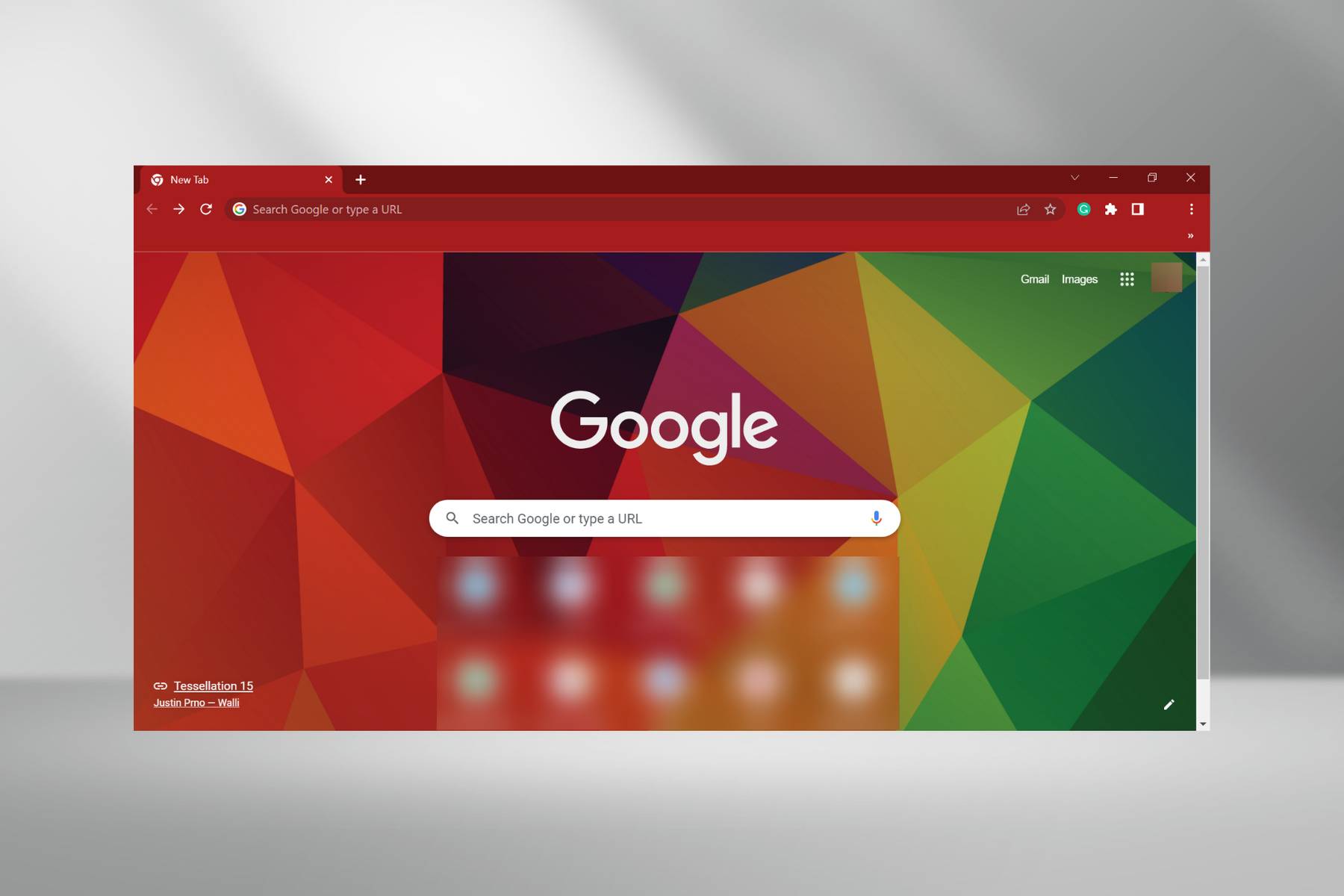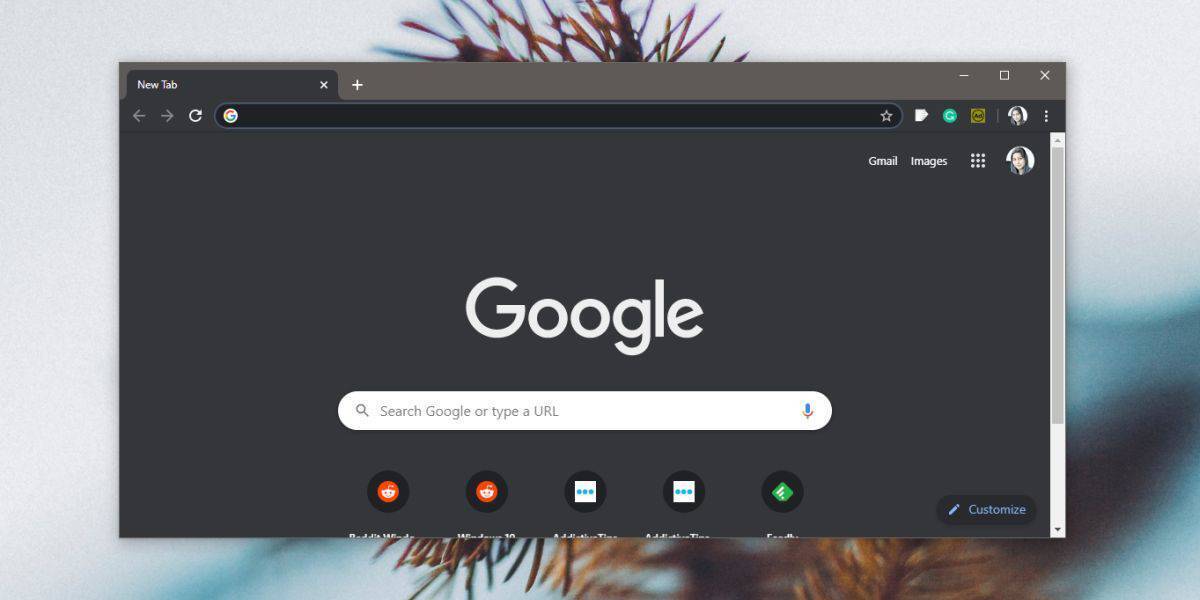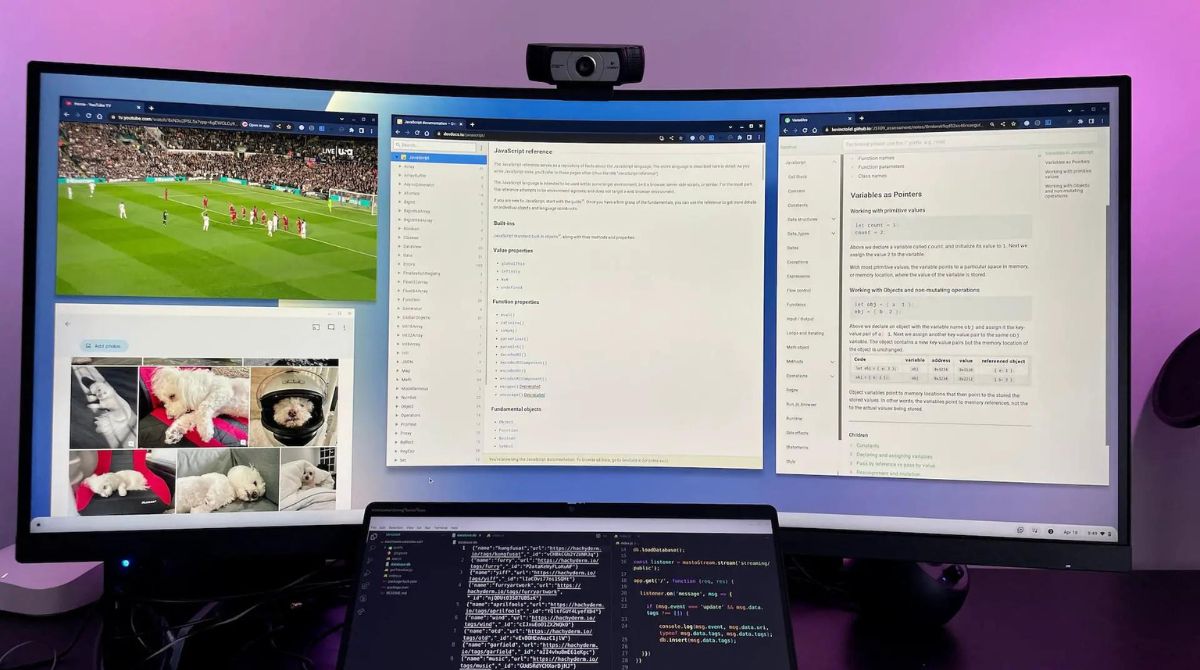Introduction
Are you someone who values a clutter-free browsing experience? Do you find the tabs bar in Google Chrome to be a distraction, taking up valuable screen real estate? If so, you're not alone. Many users prefer a minimalist interface that allows them to focus on the content without the visual noise of open tabs. Fortunately, there are several methods to hide the tabs bar in Chrome, giving you the freedom to customize your browsing environment to suit your preferences.
In this article, we will explore three effective methods to achieve this. The first method involves utilizing the full-screen mode in Chrome, which provides a seamless and immersive browsing experience by hiding all interface elements, including the tabs bar. The second method delves into the realm of Chrome flags, where advanced browser settings can be tweaked to hide the tabs bar. Lastly, we will delve into the world of browser extensions, where specialized tools can be employed to customize the Chrome interface according to your needs.
By the end of this article, you will have a comprehensive understanding of how to hide the tabs bar in Chrome using different approaches. Whether you're seeking a temporary distraction-free browsing session or a permanent minimalist setup, these methods will empower you to tailor your Chrome browsing experience to your liking. Let's dive into the details and discover how you can declutter your Chrome interface with ease.
Method 1: Using Full Screen Mode
When it comes to immersing yourself in a distraction-free browsing experience, Chrome's full-screen mode is a powerful ally. By entering full-screen mode, you can make the tabs bar vanish, allowing your content to take center stage. This method is ideal for users who want to temporarily declutter their interface and focus solely on the webpage they are viewing.
To activate full-screen mode in Chrome, simply press the "F11" key on your keyboard. Alternatively, you can click on the three-dot menu in the top-right corner of the browser window and select the "Full screen" option. Once activated, the tabs bar, address bar, and all other interface elements will disappear, providing a clean canvas for your browsing session.
In full-screen mode, Chrome maximizes the available screen space, creating a seamless and immersive environment for consuming content. Whether you're reading an article, watching a video, or engaging in any form of online activity, the absence of the tabs bar can significantly enhance your focus and visual experience.
Exiting full-screen mode is just as simple. You can press the "F11" key again or move your cursor to the top of the screen to reveal the browser's interface. From there, you can easily access your tabs, address bar, and other controls.
It's important to note that full-screen mode is a temporary solution for hiding the tabs bar. Once you exit full-screen mode, the tabs bar will reappear. However, for users who seek a quick and convenient way to declutter their browsing interface for a specific task or session, utilizing full-screen mode in Chrome is an effective and straightforward approach.
In summary, using full-screen mode in Chrome offers a hassle-free method to hide the tabs bar and immerse yourself in a distraction-free browsing experience. Whether you're delving into research, enjoying multimedia content, or simply craving a clutter-free interface, this method empowers you to effortlessly customize your browsing environment to suit your immediate needs.
Method 2: Using Chrome Flags
If you're someone who enjoys delving into advanced browser settings to customize your browsing experience, Chrome flags offer a treasure trove of experimental features and options. Among these options lies the ability to hide the tabs bar, providing a more permanent solution for users seeking a minimalist interface. By leveraging Chrome flags, you can access hidden settings and experimental features that are not readily available in the standard browser settings menu.
To begin, type "chrome://flags" into the address bar of your Chrome browser and press Enter. This will take you to the Chrome flags page, where a plethora of experimental features awaits. It's important to approach these settings with caution, as they are designed for advanced users and may impact the stability and performance of your browser if misconfigured.
Once on the Chrome flags page, you can use the search bar to find the specific flag related to hiding the tabs bar. Entering keywords such as "hide tabs" or "compact navigation" can help narrow down the list of available flags. One commonly used flag for this purpose is "Compact navigation." When enabled, this flag condenses the browser's interface, effectively hiding the tabs bar and providing a more streamlined browsing experience.
After locating the relevant flag, you can enable it by selecting "Enabled" from the drop-down menu next to the flag. Keep in mind that some flags may require you to relaunch the browser for the changes to take effect. Once the flag is enabled and the browser is relaunched, you should notice the tabs bar being hidden, creating a cleaner and more minimalist interface.
It's important to note that Chrome flags are experimental features, and their availability and functionality may change with browser updates. As such, it's advisable to exercise caution when experimenting with flags and be mindful of their potential impact on your browsing experience.
Using Chrome flags to hide the tabs bar provides a more permanent solution compared to full-screen mode, catering to users who prefer a consistently clutter-free interface. While this method requires a degree of technical proficiency and caution, it offers a deeper level of customization and control over the Chrome browser's interface, allowing you to tailor it to your specific preferences.
In summary, leveraging Chrome flags to hide the tabs bar in Chrome empowers users to explore advanced browser settings and experiment with experimental features, ultimately enabling a more personalized and minimalist browsing experience.
Method 3: Using Extensions
When it comes to customizing the browsing experience in Google Chrome, extensions serve as powerful tools that can enhance functionality, improve productivity, and modify the browser's interface. For users seeking to hide the tabs bar and achieve a minimalist browsing environment, there are several extensions specifically designed to cater to this need. By leveraging these extensions, users can seamlessly declutter their interface and tailor their browsing experience to align with their preferences.
One popular extension that facilitates the hiding of the tabs bar is "Hide Tabs." This lightweight and user-friendly extension allows users to toggle the visibility of the tabs bar with a simple click, providing instant control over the browser's interface. Upon installation, the "Hide Tabs" extension adds a discreet button to the Chrome toolbar, enabling users to hide or reveal the tabs bar at their convenience. This level of flexibility empowers users to transition between a clutter-free interface and traditional tab visibility with ease.
Another noteworthy extension in this domain is "Tab Hider." This extension offers a more automated approach to hiding the tabs bar, allowing users to set specific conditions for when the tabs bar should be hidden. For example, users can configure the extension to automatically hide the tabs bar when a certain number of tabs are open or when specific websites are visited. This level of customization ensures that the tabs bar remains hidden during designated browsing scenarios, providing a tailored and seamless experience.
Furthermore, "Full Screen for Google Chrome" is an extension that not only hides the tabs bar but also optimizes the browser for a truly immersive full-screen experience. By activating this extension, users can enter a distraction-free full-screen mode with a single click, effectively concealing all interface elements, including the tabs bar. This extension is particularly beneficial for users who frequently seek an uncluttered and immersive browsing environment.
It's important to note that while extensions offer a convenient and user-friendly approach to hiding the tabs bar, users should exercise caution when installing and granting permissions to extensions. It's advisable to review the permissions requested by each extension and ensure that they align with the intended functionality. Additionally, staying mindful of the source and reputation of the extensions can help mitigate potential security risks.
In summary, leveraging extensions to hide the tabs bar in Google Chrome provides users with a diverse array of options to customize their browsing interface. Whether through simple toggling, automated conditions, or immersive full-screen experiences, these extensions empower users to tailor their browsing environment to suit their preferences, ultimately enhancing their overall browsing experience.
Conclusion
In conclusion, the ability to hide the tabs bar in Google Chrome offers users a valuable means of customizing their browsing experience to align with their preferences. Whether seeking a temporary distraction-free environment, a more permanent minimalist setup, or a seamless transition between clutter-free and traditional browsing interfaces, the methods explored in this article provide a range of solutions to cater to diverse user needs.
The utilization of full-screen mode in Chrome presents a straightforward and immediate approach to decluttering the interface, allowing users to immerse themselves in a distraction-free browsing experience. By maximizing screen space and concealing all interface elements, including the tabs bar, full-screen mode offers a seamless solution for users seeking a temporary escape from visual distractions.
Delving into the realm of Chrome flags unveils a realm of experimental features and advanced settings, providing users with the opportunity to hide the tabs bar through a more permanent and customizable approach. While navigating Chrome flags requires a degree of technical proficiency and caution, it offers a deeper level of control over the browser's interface, empowering users to tailor their browsing environment to their specific preferences.
Furthermore, the availability of specialized extensions designed to hide the tabs bar adds a layer of convenience and flexibility to the customization process. From simple toggling to automated conditions and immersive full-screen experiences, these extensions cater to a diverse range of user preferences, enabling seamless decluttering of the interface and enhancing the overall browsing experience.
It's important for users to consider their specific needs and preferences when choosing a method to hide the tabs bar in Chrome. Whether seeking a temporary escape from visual distractions, a more permanent minimalist setup, or a seamless transition between clutter-free and traditional browsing interfaces, the methods explored in this article empower users to tailor their browsing environment to align with their individual preferences.
Ultimately, the ability to hide the tabs bar in Google Chrome underscores the browser's adaptability and user-centric design, allowing users to personalize their browsing experience and create a workspace that enhances focus, productivity, and overall enjoyment. By leveraging the methods outlined in this article, users can embark on a journey towards a more tailored and immersive browsing experience, free from unnecessary visual clutter.

























